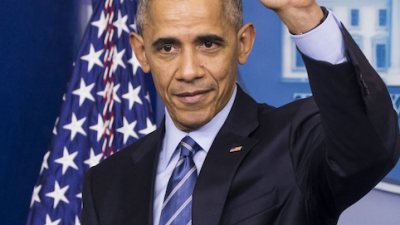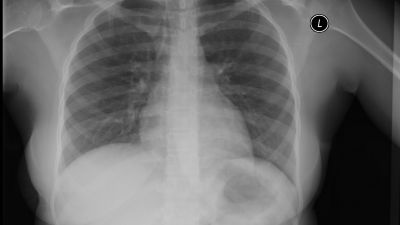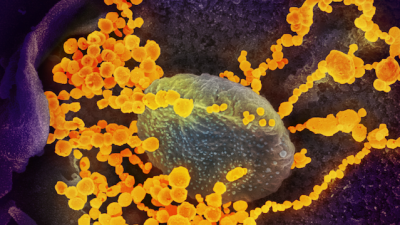This post is part of a series. Here are links to: Part I and Part III. An earlier background piece is here.
The South Korean Case
Every American needs to understand the chilling implications of the graph below. Click on a country to see the different rates at which COVID-19 infections are increasing:
Look at the US line on the graph of “Which Countries are Flattening their COVID-19 Curve.” It’s steeper than that of any other nation at this point in its pandemic experience — worse than China, worse than Spain, worse than Italy.
Some hospitals in New York City are already overwhelmed and the worst is yet to come. New Orleans could be next, unless Florida wins that dubious prize. As the US infection trend line shoots upward toward an unknown peak, some hospitals are considering universal “Do Not Resuscitate” (DNR) policies for all COVID-19 patients because there’s an insufficient supply of required medical gear to protect healthcare workers from infected patients.
Now look at the line on the graph for South Korea. So far, that country is an international success story reflecting President Moon’s efforts to flatten the curve and control COVID-19. America, on the other hand, is a case study in Trump’s catastrophic failure to do so. Now he’s suggesting that the US is somehow doing better than South Korea at managing the pandemic. The facts prove otherwise.
Jan. 31: Trump announces what he touts as a “travel ban” that is actually just a policy prohibiting non-US citizens who have traveled to China within the last two weeks from entering the US. At this point there is no process to screen, test, or quarantine US citizens, permanent residents, or their relatives still arriving legally from China in order to determine if they are carrying the virus. For nearly six weeks, Trump downplays the seriousness of the growing pandemic.
The Truth and the Timeline
Jan. 20: On the same day, South Korea and the US confirm their first COVID-19 cases.
Jan. 27: South Korean officials meet with medical company representatives, urging them to develop COVID-19 test kits immediately for mass production and promising emergency approval.
Feb. 5: Although the total number of confirmed cases of COVID-19 in South Korea remains low, thousands of test kits ship daily throughout that country. In America, the CDC is also shipping test kits to state, city, and county public health laboratories. The CDC initially sends 200 kits, each of which can test 700 to 800 samples.
Feb. 8: The CDC receives reports that its test kits are flawed and, therefore, useless. As a result, testing in the US comes to a virtual halt and the CDC must provide and process the relatively few tests that are administered. Confirming the infection in any individual patient can take days.
Feb. 23: A surge of 169 new confirmed cases, the majority of which are traced to a religious sect, brings South Korea’s total to 763. Previously, the government had already shut down day care centers, banned outdoor rallies, and postponed opening schools. Even so, South Korean President Moon raises the virus threat to its highest alert level, thereby allowing the government to allocate more money for fighting it, permitting health officials to acquire the personal data of individuals suspected of infection, outlawing religious and other mass gatherings, and controlling air, train and other public traffic around the country.
Feb. 28: The CDC announces a new fix to its COVID-19 test kits and testing resumes in the US. Trump’s response to the virus: “It’s going to disappear. One day it’s like a miracle, it will disappear.” At a campaign rally, he dismisses concerns about his handling of the pandemic as a Democratic “hoax.”
Mar. 4: By now, South Korea — a country of 51.8 million people — has performed more than 136,000 tests. The US, with a population of 329 million, has performed fewer than 1,000.
Mar. 5: South Korea has drive-through testing clinics that can detect COVID-19 cases in just 10 minutes. Overall, the country has performed over 146,000 tests and confirmed the infection in 6,000 patients, 35 of whom have died — a mortality rate of 0.6 percent. The US has performed about about 1,300 tests and doctors are contending with severe shortages of test kits.
Mar. 6: In response, Trump says, “Anybody right now and yesterday, anybody that needs a test gets a test. They’re there. They have the tests and the tests are beautiful.” Politifact labels it a “pants on fire” lie.
Mar. 10: Discussing COVID-19, Trump says, “It will go away, just stay calm. It will go away.”
By Mar. 17: This video tells the comparative story of COVID-19 testing in the US and South Korea up to this date.
Mar. 19: The US finally reaches the 100,000 mark in total tests to date. SouthKorea’s total exceeds 300,000.
Eight Weeks versus Eight Days
Mar. 23: With another week to go in his 15-day “stop the spread” promotion, Trump says that he hopes to get everyone back to work by Easter Sunday, Apr. 12.
Also on Mar. 23: The New York Times publishes a comprehensive article explaining how South Korea succeeded where America failed — flattening the curve so that COVID-19 cases don’t overwhelm the nation’s hospital system. The secrets to South Korea’s success were immediate government intervention to produce test kits on a massive scale, engaging early in widespread testing, isolating affected groups, and conducting extensive messaging to keep the public educated and informed. Trump did none of those things.
Mar. 24: At a Fox News virtual town hall meeting, Trump responds. “In the last eight days, we’ve done more testing than South Korea has done in eight weeks, And our tests are better; they’re highly sophisticated,” he says. At a press briefing that evening, he repeats the claim. It becomes a standard Trump talking point.
Fact check: According to the COVID tracking project, during the eight-day period to which Trump refers (Mar. 15 – 24), the US conducted about 338,000 tests. As of March 24, South Korea had run 348,000. In raw numbers alone, that’s 10,000 more tests for South Korea. But the US has approximately 329 million people, compared to 51.8 million for South Korea. On a per capita basis, South Korea has tested at a rate nearly seven times greater than the US. And critically, South Korea began aggressive testing weeks earlier than the US.
Consequences
Early testing enabled South Korea to pinpoint specific sources of the outbreak and target them for treatment, quarantine, and emergency alerts to affected communities. Trump’s early indifference, coupled with his desire to keep the number of US COVID-19 cases down to protect the stock market, prevented rapid identification and containment of the virus.
When Trump says he has proceeded in an unprecedented way on COVID-19 testing, he’s right — but not in a good way. His self-congratulatory lies filled Americans with a false sense of security that now makes it more difficult to promote social distancing, which is the only way to flatten the US infection curve.
South Korean President Moon told his citizens the truth, followed the advice of scientific experts, and used his executive power to prioritize people’s health over financial markets. He treated the crisis with the urgency it deserved, rather than as a public relations problem. Trump did none of that and his continuing lies, reckless disregard of experts’ advice, and obsession with economic indicators and optics are taking a very bad situation and making it worse.
© 2020 Schumann Media Center, Inc.




